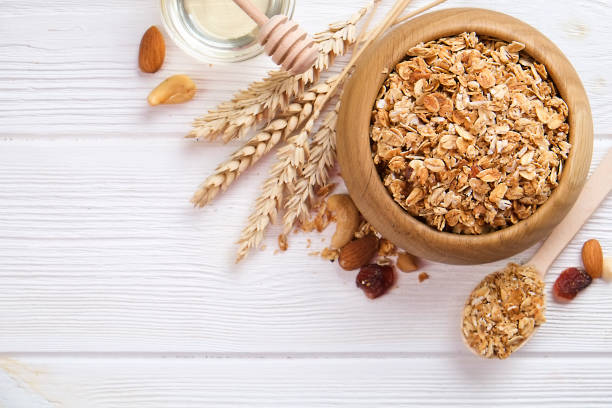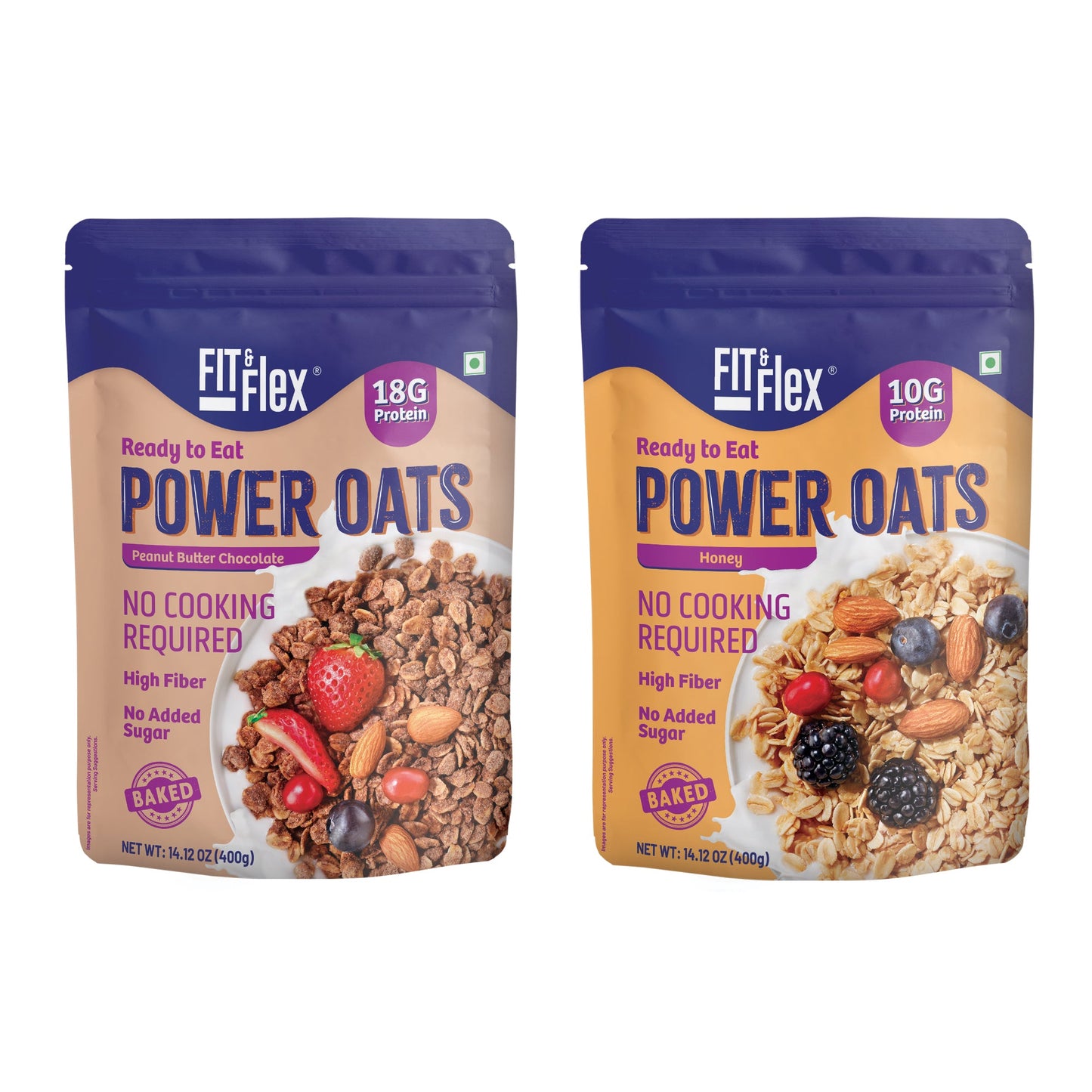The Science of Crunch: What Makes Granola Crunchy?

Granola's crunchiness is one of its most beloved characteristics, and achieving that perfect texture involves a combination of ingredients, cooking techniques, and scientific principles. Understanding what makes granola crunchy can help you create the ideal batch every time. Here's a closer look at the science behind the crunch.
Ingredients That Contribute to Crunch
1. Oats: Oats are the base of most granola recipes and provide structure. When baked, the natural starches in oats harden, contributing to the overall crunchiness.
2. Sweeteners: Honey, maple syrup, and brown sugar not only add sweetness but also act as binding agents. When heated, these sweeteners caramelize, forming a hard, crisp coating around the oats and other ingredients.
3. Fats: Oils like coconut oil, olive oil, or butter help to coat the oats and other ingredients, ensuring an even distribution of heat and preventing sticking. The fats also help to crisp up the granola during baking.
4. Nuts and Seeds: Adding nuts and seeds not only enhances the nutritional value but also contributes to the crunch. These ingredients contain natural oils that release during baking, adding to the crisp texture.
5. Dry Ingredients: Desiccated coconut, rice puffs, and other dry ingredients can increase the crunch factor. These elements add variety to the texture, making the granola more interesting and satisfying to eat.
The Role of Baking
1. Low and Slow: Baking granola at a low temperature (around 300°F or 150°C) for a longer period allows for even drying and prevents burning. This method ensures that the moisture is gradually removed, leading to a consistent crunch.
2. Stirring: Stirring the granola every 10-15 minutes during baking ensures even browning and prevents the edges from burning while the center remains undercooked. This process distributes the heat evenly, leading to uniform crunchiness.
3. Cooling: Allowing granola to cool completely on the baking sheet after removing it from the oven is crucial. As it cools, the granola hardens, solidifying into crunchy clusters.
Scientific Principles
1. Caramelization: Caramelization occurs when sugars are heated to high temperatures, leading to the development of complex flavors and a crispy texture. This process is key to achieving the desired crunch in granola.
2. Maillard Reaction: This chemical reaction between amino acids and reducing sugars gives browned foods their distinctive flavor and crunch. The Maillard reaction enhances the color, flavor, and texture of granola as it bakes.
3. Water Activity: Reducing the water content in granola is essential for crunchiness. Baking removes moisture, and adding ingredients like sugar and fat lowers water activity, helping the granola stay crisp.
Understanding and Perfecting Crunchy Granola
1. What is the base ingredient for crunchy granola?
Oats are the primary base ingredient, providing structure and crunchiness when baked.
2. How do sweeteners contribute to the crunch?
Sweeteners like honey, maple syrup, and brown sugar caramelize when heated, forming a hard, crisp coating around the oats and other ingredients.
3. What role do fats play in making granola crunchy?
Fats such as coconut oil, olive oil, or butter coat the ingredients, ensuring even heat distribution and preventing sticking. They help crisp up the granola during baking.
4. Why add nuts and seeds to granola?
Nuts and seeds enhance the nutritional value and contribute to the crunch by releasing natural oils during baking.
5. How do dry ingredients affect granola's texture?
Ingredients like desiccated coconut and rice puffs increase the crunch factor, adding variety to the texture.
6. What is the best baking temperature for granola?
Baking at a low temperature (around 300°F or 150°C) for a longer period ensures even drying and prevents burning, leading to consistent crunchiness.
7. Why is stirring important during baking?
Stirring every 10-15 minutes ensures even browning and prevents burning on the edges while the center remains undercooked, leading to uniform crunchiness.
8. What happens during the cooling process?
Allowing granola to cool completely on the baking sheet solidifies it into crunchy clusters.
9. What are the key scientific principles behind crunchy granola?
- Caramelization: Sugars caramelize at high temperatures, creating complex flavors and a crispy texture.
- Maillard Reaction: This reaction between amino acids and reducing sugars enhances flavor, color, and texture.
- Water Activity: Baking removes moisture, and ingredients like sugar and fat lower water activity, keeping granola crisp.
10. How should granola be stored to maintain its crunch?
Store granola in an airtight container in a cool, dry place to prevent moisture absorption, which can make it soggy.
11. Can you restore granola's crunch if it becomes soggy?
Yes, spreading granola on a baking sheet and reheating it in the oven at a low temperature for a few minutes can remove absorbed moisture and restore its crispness.
Tips for Maintaining Crunch
1. Storage: Store granola in an airtight container to prevent moisture absorption, which can make it soggy. Keeping it in a cool, dry place extends its shelf life and maintains its crunch.
2. Re-crisping: If granola loses its crunch over time, you can spread it on a baking sheet and reheat it in the oven at a low temperature for a few minutes. This process helps to remove any absorbed moisture and restore its crispness.
By understanding the science behind what makes granola crunchy, you can experiment with different ingredients and techniques to perfect your recipe. Whether you prefer chunky clusters or a finer, evenly crunchy texture, these principles will guide you in creating the ideal batch of granola every time. Enjoy the satisfying crunch in your breakfast bowl or as a tasty snack throughout the day.




